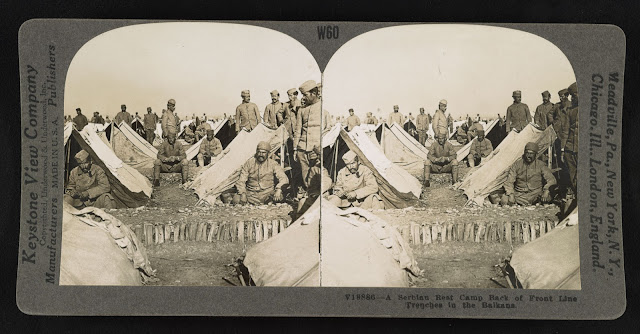Description: From the dawn of history until the World War", soldiers fought more or less continuously throughout a campaign, but in the World War rest camps became a necessity.
In no previous war have men ever been subjected to such terrific nerve strain as in this one; the ceaseless concussion of high explosives, the whine of approaching shells, the constant tension in time broke down the hardiest.
In no previous war have men had to exist in the midst of such horrors as this war produced. The smell of rotting human flesh ever tainting the air. Fragments of human bodies were ever before I heir eyes and under their feet. Standing, often for hours, in filthy water up to their knees, gasping in poison gas, shriveled in the hot blast from flame throwers, these things broke the morale of the troops, shattered the health of the men and impaired their courage.
So rest camps were established, camps miles behind the front, beyond the range of big guns; camps in which men could for a white escape the din, the smells and the sights of the battle field; camps which afforded quiet, and leisure, arid some form of placid amusement. To these camps men were sent once every few weeks, as frequently as they could be spared from the front. In these camps their frayed nerves recovered composure, their health improved and their spirits were freshened.
The camp at which we are looking was located in Serbia. It is a very plain camp in comparison with those which the great powers had for their soldiers, it lacks many of the comforts which the others had, nevertheless these men before us enjoyed their respite from war. From this camp they returned to the front to fight with renewed vigor and determination.
- Excerpt from: The World War through the stereoscope a visualized, vitalized history of the greatest conflict of all the ages / / edited by Major Joseph Mills Hanson.
- Published/Created by: Meadville, Pa.; New York, N.Y.; Chicago, Ill.; London, England:
- Keystone View Company, photographed between 1914 and 1918, published 1923
- Repository: Library of Congress Prints and Photographs Division Washington, D.C. 20540 USA







0 Comments